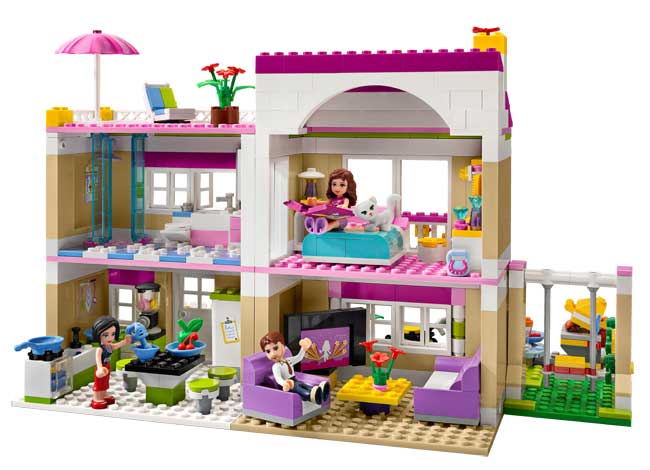 My mentor, Dan, has a couple of lovely daughters who are growing up how I wish I did. They live in an environment that is friendly to both the pink, tea-party lifestyle of many little girls as well as the innovative and engaging world of STEM learning. They have parents who encourage them to seek out their interests, whatever they may be, and not to define them as mutually exclusive. Many different companies with STEM campaigns are trying to cater to girls like these. For example, the toy set LEGO Friends is the company's attempt to turn a toy with a primarily male audience into a creative platform for all children. These new toys and campaigns have wonderful motivations-- everyone knows that STEM careers have a huge gender gap, and many well-intentioned groups are trying to fix that by modifying their products or creating new ones specifically for girls. But can you really target all girls? And will it do anything to draw more interest in STEM? I don't think the answer is quite clear. LEGO Friends, as an example, is specifically designed for young ladies, and is comparable to other youth play sets like Polly Pocket orBratz dolls. The color scheme is pastel, full of pinks and purples, the cities include hair salons and cafés, and the figurines themselves have been altered to be more appealing to little girls. While I understand the reasons for these changes, the way this product, and others, go about trying to encourage STEM engagement in young girls is misguided. What LEGO has done is not to tear down a barrier, but to vivify it, as LEGO's have essentially been gendered. Despite wellintentions, they have made a LEGO set that is completely different from all of their other sets, even going as far as to change one of the signatures of the company, which includes more girls in the market but not in the community. These substantial changes seem to highlight the differences between male sets and female sets of LEGOs, and though they engage young girls they also still reinforce traditional gender roles. The pet shops of the Friends set are in stark contrast to the police stations and workshops of the original LEGO Cities sets, providing little encouragement for actual pursuit of STEM careers when the little girls grow out of their toys. In addition,those who are already interested in STEM may feel alienated for purchasing what will now be considered the "boy sets." So if targeted campaigns don't work (and in some cases, actually hurt the female STEM community), then how on earth are we going to get more girls involved? The answer is actually quite simple: don't target girls, but instead work on making FIRST and STEM fields more open communities. The best environment that attracts girls is one of respect, flexibility, and open-mindedness, something that campaigns that target girls fail to do. Open communities acknowledge everyone's unique circumstances and work towards being inclusive, not trying to single out certain groups because of their differences. This encouragement comes from people, not objects. Dan and his wife are the ones that make the real difference for their daughters, not the toys they play with. Parents, mentors, and students all have the potential to influence young girls and open the door to STEM education, and when someone feels accepted in a community they will always come back. Let's make FIRST something to come back to. This blog post was written by Sarah Powazek from FRC Team 1318, The Issaquah Robotics Society. If you are interested in blogging for FIRST Ladies, sign up on the schedule.
4 Comments
Geoff Deane
2/14/2015 05:07:18 am
Thanks for writing this, Sarah! As a dad of a 12 year old daughter and a mentor to 2 FLL teams, I'm really interested in this topic (so much so that I convinced my company to sponsor a WFR program to look at how we can better encourage girls).
Reply
Sarah Powazek
2/14/2015 02:03:04 pm
Hi Geoff!
Reply
Regina Grubb
2/14/2015 01:43:18 pm
Great perspective Sarah, I think you are spot on!! I'll challenge you one further...Let's make FIRST something you never want to leave!
Reply
2/14/2015 02:10:21 pm
Sarah, you hit the nail on the head with this comment:
Reply
Leave a Reply. |
Be a guest
Do you want to be a guest blogger for FIRST Ladies? You can write about a topic of your choice! Anyone can submit a blog, especially our Regional Partner teams! Please email us the a Google Doc of the completed blog. Thank you! Archives
April 2024
|

 RSS Feed
RSS Feed
